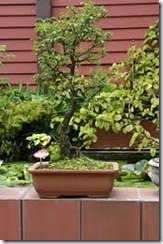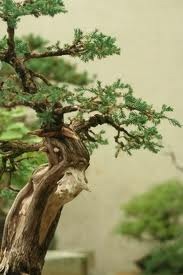 Watering is indispensable to bonsai raising. It is a plant’s lifeline. Proper watering promotes a plant’s growth. Otherwise the plant becomes weary or withered. Although watering does not sound too difficult, you must keep experimenting to master it. Watering takes the most amount of time in bonsai raising, and in this sense it is the most intimate contact you have with your bonsai plant. You should master this fundamental for a plant’ s growth.
Watering is indispensable to bonsai raising. It is a plant’s lifeline. Proper watering promotes a plant’s growth. Otherwise the plant becomes weary or withered. Although watering does not sound too difficult, you must keep experimenting to master it. Watering takes the most amount of time in bonsai raising, and in this sense it is the most intimate contact you have with your bonsai plant. You should master this fundamental for a plant’ s growth.
“How Often Should You Water?
When people walk into our nursery, this is, without exception, the most asked question. Unfortunately, there is no simple answer. How often you should water a bonsai tree depends on several different variables: what type of tree is it, what time of year is it, where is your tree kept, where do you live, and more than a few others. Watering bonsai is a constant balance between too much and too little.
How Should You Water?
The "best" way to water is to first wet the soil a little, this will improve the soil’s ability to absorb a larger volume of water, and then you should water thoroughly until the soil is saturated. Make certain that the entire soil mass gets wet – every time – you water and wait for the excess to run out of the drainage holes to be sure.â€
“When Should You Water?
The "best" time to water is arguably early in the morning, before your bonsai begins its day of photosynthetic activities. However, it is important to be vigilant about its watering needs throughout the day, especially during the summer. Bear in mind that bonsai trees do not grow when the soil is wet and they do not grow when the soil is dry: it is only during the in between periods that your bonsai tree takes in water and nutrients. You also need to be aware of the amount of light your new bonsai is getting, the temperature of the room your bonsai is located in and the humidity levels of that immediate area. You also need to be realistic about your other life responsibilities, not only for their sake, but also for the sake of your bonsai. Work out a watering schedule that is realistically feasible. It makes no sense to schedule watering late in the morning, if you know that five days a week you’re going to be out the door by 7 AM. Be practical or you and your bonsai will be sorry.
What Kind Of Water Should You Use?
Water your new bonsai with room temperature tap water, because cold water has the potential to shock its roots. If you have the ability and the time to collect rain to water, that is great, but it is unnecessary unless the water in your neighborhood is unfit to drink – and, if it is, you might consider moving yourself and your bonsai somewhere safer.â€
HUMIDITY
“Why Is Humidity Important For Bonsai?
Although indoor bonsai slow their growth in winter and do not need as much water, they still do require sufficient humidity. Humidity helps to reduce water loss through the processes of transpiration. Transpiration will have a negative effect on your bonsai’s ability to retain water and remain healthy.
How Can Humidity Be Improved?
The sometimes-dry climate of a home or apartment can be altered to benefit your bonsai tree. Placing your bonsai on a ‘humidity tray’ filled with decorative pebbles, that should be kept wet at all times, will help increase humidity levels. Another solution is regular misting. Misting is the most common humidifying method. It has the additional benefit of removing dust from your bonsai, which blocks sunlight and interferes with the exchange of oxygen and carbon dioxide. Be sure to mist using room temperature water to avoid shock.
What Else Is Helpful To Prevent Dry Conditions?
Keep your indoor bonsai trees away from breezy doors, windows and heating sources, such as vents, radiators, and fireplaces; to avoid quickly drying them out. While more sunlight is desirable, it may dry out your bonsai. So,
maintaining a watering schedule during winter is just as important as during summer.â€

Deprecated: strpos(): Passing null to parameter #1 ($haystack) of type string is deprecated in /home/agriviek8Qv/agriviet.net/public_html/wp-includes/comment-template.php on line 2522